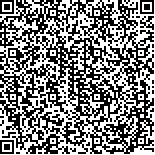下载中心
优秀审稿专家
优秀论文
相关链接
摘要

海岸线变迁是沿海生态系统变化的重要指示因子,是国家海洋经济关注的重要组成部分。本文通过构建光谱角度-距离相似度模型,解决HJ-1B/IRS红外传感器在海岸线自动化提取应用中的可行性问题,以及当前方法应用于不同时相数据过程中的阈值不稳定性问题,拓展IRS传感器的应用领域和价值。光谱角度-距离相似度模型以多光谱像元归一化辐射值为向量元素,度量不同像元在单位空间距离上的角度相似性,以迭代方式分析水体样本像元与周边八邻域相邻像元的角度-距离相似性,通过相似性约束对水体样本进行区域生长以获取水岸分界线。通道辐射归一化分析表明采用反射率和量化等级最大值归一化的通道值能很好地反映地物随季节的变化;样本相似度分析表明以水体和非水体相似度两倍方差(0.01)为误差的生长阈值(0.98)适用于全时相影像水岸线提取,总体精度优于80%。验证数据分析表明,角度-距离相似度模型阈值稳定、不受时相影响。通过与常用的High Pass卷积滤波、Roberts卷积滤波、Sobel卷积滤波、Laplacian卷积滤波、FFT高通变换和Canny提取结果比对分析表明,High Pass、Laplacian和FFT变换无法应用于IRS传感器,Roberts和Sobel相对来说能较好的识别水陆边缘,Canny在正常噪声条件下也能有效识别水陆边缘。但这些算法在识别水陆边缘线的同时,也将内陆地物边缘线进行了识别,如何将内陆地物边缘线从识别结果中有效去除,是这些方面所面临的重要难点。比较而言,角-距相似度模型能很好的应用于IRS传感器的海岸线提取,对传感器的噪声并不敏感,在B4通道非正常水平噪声条件下也能提取出理想结果,而且后续处理简单,不存在内陆边缘线的干扰问题。光谱角度-距离相似度模型对海岸线识别精度较高、模型参数稳定,能有效地提升IRS传感器在海岸线提取方面应用价值。在实际应用过程中需要避免的是,既覆盖陆地又覆盖海洋的云团会遮挡地物光谱信息,造成海岸线无法有效分离,因此需要对影像数据进行有效的筛选。本文基于遥感影像提取的海岸线只是瞬时水边线,需要进一步结合海岸线的类型以及潮位数据和DEM等数据进行修正得到最终的海岸线。
Coastline change is a major indicator of alterations in the coastalecosystem and has been the focus of attention in marine economy. In this study, the spectral angle-distance similaritygrowth model was established to address the feasibility of automatic coastline extraction HJ-1B/infrared scanner (IRS) and the instability problem of the threshold value of traditional methods that use data at different phases. This model broadens the application and increases the value of IRS.
The spectralangle-distance similarity growth modelutilizes the normalized radiation values of multispectralpixels as vector elements, which measure the anglesimilarity of different multidimensional vectors in the distance space. This model also analyzes the angle-distance similarity of water sample pixels and eight neighborhood pixels through iterative calculation. The water-land boundary was determined with the regional growth of water sample pixels via similarity constraint.
The analysis of channel radiometric normalization showed that normalized channel values with reflectance and maximum quantization level reflect landmark change with time. The sample similarity analysis showed that the model was suitable forwhole-phase coastline extractionby taking two time standard deviation (0.01) of similar water bodies and other landmarksas the growth threshold (0.98), and that the general accuracy was more than 80%. Verification data analysis indicated that the threshold of the angle-distance similarity growth model was stable and was unaffected by phase. Comparing the extraction results of digital image edge detection methods, such as high-pass Filter, Roberts filter, Fast Fourier Transform (FFT), and Canny algorithm, revealed that these methods caused numerous broken stripes and spots in a complicated topography area. The extraction result of the waterlineshowed a mixture of numerous cracks and gaps, which hindered the further processing of the coastline. FFT was not applicable for coastline extraction through IRS given that the influence of stripe noises. Moreover, the coastline cannot be extracted through high-pass and Roberts filters, except for Canny algorithm, when the noise of IRS B4 was normal. However, Canny algorithm cannot be used when the noise was non-normal. These algorithms extracted coastlines with multi-inland border lines, which were difficult to remove. The effective removal of inland border lines from the extraction result was a difficult problem for these algorithms. By comparison, the angle-distance similarity model can be applied to coastline extraction viaIRS sensor, which was not sensitive to the noise sensor. It can also obtain desired results when the noise of B4 was non-normal. Furthermore, the subsequent processing was simple because no inland border lines interfered. This model enhances the application value of the IRS sensor in coastline extraction.
The cloud cluster covered both land-and sea-occluded spectrum information, which led to ineffective coastline extraction. Therefore, data selection is necessary before application. The coastline, which is extracted from remote sensing images in this study, only included the instantaneous waterline and not the coastline in the strict sense. Artificial coastline and bedrock shoreline can be directly used as shoreline. However, the final extraction result of gravel coastlines, mangroves, and estuary coastlines need to be modified using tide and digital elevation model data.

